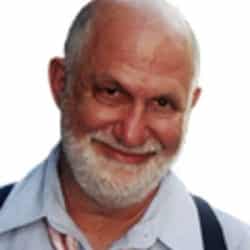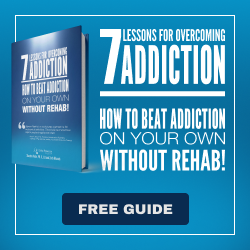Addiction will always be there – But there IS a way out
We are recognizing that addiction is a regular part of life, and it scares the hell out of us.
When I published Love and Addiction with Archie Brodsky in 1975, we received catcalls from my fellow faculty members at the Harvard Business School: “ Right, love can be addictive-ha! ha! ha! ”
That idea is now part of the common vernacular. In her heralded new novel The Mare, Mary Gaitskill ( through a character ) describes her self-abuse, for which she turned to AA:
My sponsor knew the way I had lived: Blank loneliness . . . scene after drunken idiotic scene, mashed up conversations nobody could hear, the tears and ugly laughter quieted only by the rubber tit of alcohol or something else. Friendship was bad, sex was worse, and love—love! There was someone who rang my bell at 3 a.m. and I would let him in so he could tell me I was worthless, hit me, have sex, and leave. . . It was like being locked into a nightmare more real than anything until I woke and couldn’t really remember the details or make sense of it, knowing only that it was terrible and that I would do it again.
Start Your Sex Addiction Recovery Today
Which brings us towards the strange state of DSM-5. I want to summarize two advancements in DSM-5 that people struggle with, but that have been necessary, even if contradictory.
First, addiction is never applied to drugs in the Substance Use Disorders (SUDs) section of DSM-5. How can that be? Because whether or not something is said to be addictive (say cocaine, marijuana and cigarettes) varies with changing attitudes. More importantly, no substance is inherently addictive—most users of any substance don’t become addicted (think of painkillers).
Second, for the first time in DSM-5 (although I have been saying it since Love and Addiction), things other than substances are recognised as creating addictions. Thus, strange to say, in DSM-5 the ONLY thing labeled addictive in the chapter “Substance Use and Addictive Disorders” is gambling!
Of course , addiction can’t be limited solely to gambling, of all the activities and involvements in the world! That is craziness. Addiction has always been, and will always be, with us. I entered the addiction field because I wanted a subject that would always be front and center-how right I was!
Paula Poundstone has a new routine -” Stop Flat-Screen Addiction! “- in which she states: “ Almost everyone in this country is addicted to electronics and riddled with denial. ” She says that kids are almost universally hooked on their iPhones and other screen devices. Only their parents can’t criticize or stop them-because they’re all addicted too!
Are electronics addictive? Do they cause impairment and distress (the keynotes of a DSM-5 psychiatric diagnosis)? They can often, as they do with children who refuse to leave their houses, do homework, or interact with other humans. Isn’t it significant that the two most horrible mass murderers in our time-the Newtown school shooter, 20-year-old Adam Lanza, who fatally shot 20 children and six adults and the Norwegian lone-wolf terrorist, Anders Behring Breivik, who killed a total of 77 children and adults with bombs and gunfire-were both hopelessly addicted to violent video games? Neither left their homes or interacted with ordinary people.
While we ponder the relevant question of whether video and electronic activity is addicting virtually everyone in America, let’s reflect on a few disparate pieces of information. Marijuana is now legal in four states (WA, OR, AK & CO) and the federal District of Columbia, while it seems likely California (representing 35% of the American population) will legalize the drug in 2016.
Meanwhile, we are in the midst of our latest heroin scare-which includes synthetic opiates now, like OxyContin-the combined use of which and deaths due to have become rampant since 2010. But this doesn’t mean drinking problems are disappearing. Not! There was a 50% increase in past-year alcohol disorders between 2001-2 and 2012-13.
And are you aware of all the new designer drugs, one of which is likely to rear its head at any given time? Have you heard about bath salts-named for their resemblance to Epsom salts-and Spice and synthetic marijuana (a misnomer, but whatever)? And have you heard about new virtual reality video games? I wonder how people will react to those?
What’s going on? As Archie Brodsky and I said in Love and Addiction 40 years ago, “Addiction is not a side-effect of certain drugs. It is a fundamental reaction people have to experiences that they find overwhelmingly absorbing, and that they believe they cannot do without. ” It is, and always has been, a crucial mistake to identify addiction as a drug-based phenomenon.
Do You Want to Overcome Your Addiction Permanently?
So what do we do with this truth? We recognize that addiction will not and cannot be eliminated, and work to create people who are capable of resisting the addictive allure of so many things available around us, an universe of things that is constantly expanding. To imagine that you, or your children, will be able to simply avoid addictive involvements altogether is a fundamental fallacy. One that is unfortunately propagated in drug treatment, policy and prevention programs and policy.
Listed below are three solutions I’ve proposed since composing Like and Addiction:
1 . In Addiction-Proof YOUR SON OR DAUGHTER, I indicate that people must raise kids with the capacity of resisting addiction.
2 . In Recover! An Empowering System to assist you Cease Considering As an Reclaim and Addict YOUR DAILY LIFE ( co-authored with Ilse Thompson) I offer a mindfulness method of experience which allows us to overcome addictions, once started.
3. As for public policy, attempting to outlaw this or that addictive participation is a pointless misdirection that results in us forever playing catch-up with the lastest cravings.
These fundamental ideas are scary. Am I saying all our kids won’t have the ability to prevent drugs-even after we prescribe increasingly more pharmaceuticals (antipsychotics, amphetamines to take care of ADHD, anti-depressants) to kids and teenagers and young adults? Yes, I do mean that. What about taking their electronic devices away from them? Really? What about getting kids on college campuses never to drink, even when they turn 21 while there and are legally able to buy alcohol?
There is no alternative to recognizing the universality of addictive experiences and creating addiction-resistant humans. We can deny this reality, as Paula Poundstone describes us trying to do with electronic devices. Or we can deal with the actual world of addiction, of lived experience, that we face, one that is not going away, but is expanding every day.
On a final note, I fully support the motion to reject the expressed term and the idea of “addict. ” In my own publication with Ilse Thompson and elsewhere, I argue that folks are not described by their addictions, which are time-limited often.
On that note, let me go back to Mary Gaitskill’s character, who abandons the AA, begins a healthy and sustainable relationship with Alcohol and dares to love-the redemptive theme of The Mare, where she nurtures a woman who ends up living with with her and her spouse: “she [her sponsor] had known me in the hard, ungiving way she knew herself. . . [but I now] knew: Just because I had been in hell, I don’t have to be there always. Love is not always a sickness. . . I have changed. I can trust myself. I love Paul. I love Velvet. I can trust it. ”





